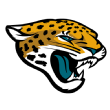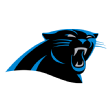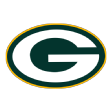All the NFL running backs who could get paid in 2020, and why recent deals look like disasters

The 2017 running back class is something special. Five of the league's seven leading rushers -- Christian McCaffrey (first), Dalvin Cook (second), Marlon Mack (fifth), Leonard Fournette (sixth), and Chris Carson (seventh) -- are from the 2017 draft. McCaffrey is tied for the league lead in touchdowns with Aaron Jones, who is also from that 2017 class. Alvin Kamara and James Conner have struggled with injuries, but they're also 2017 studs. Throw in undrafted free agent Matt Breida and 10 of the league's 32 starting backs are from the 2017 class, and that's without getting to secondary options such asTarik Cohen, Kareem Huntand Austin Ekeler.
Many of those backs are going to get paid. The 2017 class becomes eligible for extensions for the first time this offseason, but it's a strange time to be a running back. Running back salaries were grossly depressed before a recent run, but in 2019, virtually every back on a significant long-term contract has struggled to reproduce his prior form. Contracts few would have argued with at the time they were signed are now underwater. Backs who looked like stars have turned into ordinary, replacement-level runners.
I find this juxtaposition interesting. It's easy to talk about not paying running backs in the abstract, but just about every team knows it can probably get away with shuffling players in at the position, and many still hand out multiyear deals to veterans anyway. A draft class full of successful backs in the mid-to-late rounds is about to ask for a lot more money. Teams that have witnessed expensive backs fail in 2019 are going to have to decide whether they're going to rely on academic principles or fall in love with their guy as the exception to the rule.
Let's look at the backs who are playing on contracts worth more than $15 million and see what has happened to them, both over the course of their current deal and specifically in 2019. Then, I'll get to the backs from 2017, project what their teams will do, and try to give some insight into what each organization with a 2017 draftee should do with their existing starter. Naturally, let's start with the most expensive running back in football.
Jump to a RB who got paid:
Barkley | Bell | Elliott
Freeman | Gurley | Johnson
Jump to a RB who could get paid soon:
Carson | Conner | Cook
Fournette | Gordon | Henry
Jones | Kamara | McCaffrey
The big-money backs
Ezekiel Elliott, Dallas Cowboys
The deal: Six years, $90 million
I covered Zeke's season in my column on Monday, when I noted how he has created far fewer big plays and hasn't been as efficient in 2019. The arguments that Dak Prescott needed an effective Elliott to move the ball as a passer weren't supported by past evidence and look downright foolish now.
Elliott isn't holding the Cowboys back by any means, but they have actually been slightly more efficient on offense with backup Tony Pollard on the field than him. Elliott has been on the field far more frequently, but the offense has generated 0.21 points of additional expected points per play with Pollard on the field and 0.17 points with Elliott in the lineup.
That doesn't sound like much, but over the course of a full game's worth of snaps, it factors out to about 2.6 points for the Cowboys. That stat doesn't tell the whole story, but the most expensive back in football should look more productive than a rookie fourth-rounder who will make $3.2 million over the next four years. (Elliott, by comparison, is penciled in for just over $50 million over that same time frame.)
Todd Gurley, Los Angeles Rams
The deal: Four years, $57.5 million
Gurley's enormous volume as a runner and receiver and gaudy touchdown totals made him a fantasy darling and an MVP candidate during 2017 and the first half of the 2018 season. He seemed like the most important part of the Rams' offense, which is why it was no surprise when Los Angeles signed him to a massive extension after his third season. If any player was an argument against the idea that teams could just plug any running back into a scheme and succeed, it was Gurley.
Well, when he got hurt in November 2018, the Rams signed C.J. Anderson off the street and saw the burly former Broncos starter play just as well for the minimum as Gurley had. After Gurley returned, the Rams used Anderson as the focal point of their timeshare during the playoffs. With the offensive line struggling and Gurley dealing with a long-term knee issue, his role in the offense has been reduced, and he has been far less efficient. After nine games last season, Gurley was averaging 4.8 yards per carry, 136.7 yards from scrimmage per game, and had 16 touchdowns. In 2019, he's averaging 4.1 yards per carry, 71.3 yards from scrimmage per game, and has eight touchdowns.
Le'Veon Bell, New York Jets
The deal: Four years, $52.5 million
The famous phrase surrounding Bell was that the Steelers wanted to "pay the position, not the player." The implication, of course, is that Bell transcends the running back position. While he attracted a ton of volume as a receiver in Pittsburgh, the argument that he deserved to be paid like a combo of a running back and wide receiver didn't stand serious scrutiny. The Steelers did just fine at running back without Bell in 2018.
Bell's stint in New York has been a disaster. Surrounded by a dismal offensive line and with a coach who might not want him altogether, the three-time Pro Bowler has averaged just 3.2 yards per carry and has yet to top 70 rushing or receiving yards in a game. His longest play of the season has gone for only 21 yards, and while he was incredibly efficient in Pittsburgh, Bell ranks dead last in DVOA and 28th in success rate, which measures how frequently a back keeps his offense on schedule. DVOA doesn't tell the whole story for running backs, but Bell hasn't remotely moved the needle in his first season in the Big Apple.
Devonta Freeman, Atlanta Falcons
The deal: Five years, $41.3 million
Freeman spent 2015-16 as the primary back in a Kyle Shanahan offense, which is a license to print money. After racking up 3,175 yards from scrimmage and 31 touchdowns during those two seasons, the Falcons locked him up by giving him $17.3 million in guarantees and just over $22 million in 2017-19.
Over that time frame, Freeman has totaled 1,926 yards from scrimmage, with 11 touchdowns and seven fumbles. After a lost 2018 season, he was averaging 3.5 yards per carry this season before going down because of a foot injury. He already has missed 17 games over the past three seasons and might miss Sunday's game with the Bucs. The 27-year-old will almost surely be a cap casualty for the Falcons this offseason.
David Johnson, Arizona Cardinals
The deal: Three years, $39 million
The Cardinals guessed wrong. After a brilliant 2016 season in whichI thought Johnson should have been an MVP candidate, the Northern Iowa product suited up for only 46 snaps in 2017 before going down because of a season-ending wrist injury. With Johnson entering the final year of his rookie deal in 2018, the cap-strapped Cardinals responded to the Todd Gurley deal by signing Johnson to a three-year extension with $24.7 million in guarantees, despite the fact that he had really been a productive starter for only one year at the pro level.
It hasn't gone well. Johnson racked up 2,118 yards from scrimmage and 20 touchdowns in 2016. He has produced 2,011 yards from scrimmage and 15 touchdowns in 2018-19, but that has come over 24 games and required 48 more touches. He has averaged just 3.7 yards per carry and lost his starting job to Kenyan Drake, who only arrived two weeks ago. Disconcertingly, the Cardinals will owe $10.2 million in guaranteed money to Johnson for 2020, which will trigger an additional $2.1 million in guarantees for 2021.
Saquon Barkley, New York Giants
The deal: Four years, $31.2 million
The undeniably gifted Barkley is on a fully guaranteed deal after being taken with the second overall pick by the Giants in 2018. While he has shouldered a huge workload amid dismal quarterback play from Eli Manning and Daniel Jones, he hasn't been able to single-handedly propel the offense forward. Barkley has been the ultimate boom-or-bust back, ranking 41st out of 47 backs in success rate in 2018 and last out of 35 qualifying backs this season.
In 2018, Barkley had seven runs of 40-plus yards on 261 runs. While slowed by a high ankle sprain this season, he has only one in 101 carries. If you need to break 40-plus yard runs once every other week to create value, the track record of guys in the NFL who have been able to pull that off for an entire career is mostly just Barry Sanders, and that's in part because he was able to stay healthy.
The Giants and hog-molly enthusiast Dave Gettleman passed on Quenton Nelson to draft Barkley, and Nelson is arguably the best interior lineman in football. They passed on Lamar Jackson, and Jackson is the most valuable runner in the league. The Giants ranked 16th in rush offense DVOA last season and are 20th this season. Barkley is an incredible athlete and has little to work with, but that doesn't mean he was the right pick.
Jerick McKinnon, San Francisco 49ers
The deal: Four years, $30 million
A bizarre signing when it went down in 2018, McKinnon will end up collecting $16 million without ever taking a regular-season snap in a 49ers uniform after tearing his ACL during workouts in 2018 and aggravating the injury this summer. The 49ers have done just fine with Tevin Coleman and a trio of undrafted backs in Matt Breida, Raheem Mostertand Jeff Wilson this season.
Leonard Fournette, Jacksonville Jaguars
The deal: Four years, $27.2 million
By virtue of being drafted with the fourth overall pick, Fournette ended up with one of the largest running back contracts in football when he was signed. The Jaguars drafted him after throwing asset after asset at running back and hoped to solve their problem for good. In the process, they passed on Patrick Mahomes and Deshaun Watson. That alone makes the Fournette pick a disastrous example of opportunity cost. As you'll see, he might be the 10th-best runner in his own draft class.
Fournette was drafted as an Adrian Peterson clone, a runner who was supposed to win between the tackles, overpower defenders and keep the chains moving. He hasn't done that on a consistent basis. Fournette ranks 33rd out of 35 backs in success rate this season. That's actually worse than he performed in 2017 and 2018, when he ranked 26th out of 47 qualifying backs in each season. His yards per carry have spiked from 3.7 in 2017-18 to 4.6 this season, but that's a product of four long runs in which he broke a total of three tackles. Those runs matter, but given Fournette's previous track record, they're not likely to be a sustainable path to success.
Lamar Miller, Houston Texans
The deal: Four years, $26 million
Miller has missed all of 2019 because of torn ACL and MCL, which obviously has made this season a waste for the Texans. This was the final year of the deal he signed in free agency, and while he made the Pro Bowl in 2018, he played only one full 16-game season in his four years in Houston.
Miller was about as efficient for the Texans as he was in Miami, converting 38.4% of his runs into added expected points for the Texans after hitting on 39.8% of his runs in Miami, but the big plays mostly vanished. He generated seven plays of 35 yards or more on 755 touches with the Dolphins. He had only three such plays on 808 touches with the Texans, with one 97-yard run as an outlier.
The Texans essentially paid Miller to be one of the best backs in football and got league-average play before getting nothing in 2019. Teams make worse mistakes, and I sympathize with Miller playing behind a porous offensive line for much of that time, but it's also hard to argue with the idea that the Texans would have been better off committing this money to their line and going with a cheaper option.
Dion Lewis, Tennessee Titans
The deal: Four years, $19.8 million
During his time in New England, Lewis was either wildly productive or injured. In Tennessee, strangely, he has been neither. Signed to be the 1A to Derrick Henry's 1B, Lewis flopped when the Titans made him their main back during November 2018, starting six straight games and carrying the ball 72 times for only 200 yards. Henry won the role back with some impressive performances in December and has subsequently become the focal point of Tennessee's offense. Lewis finished last season with the league's worst success rate.
In 2019, Lewis has almost disappeared from the offensive game plan. He has touched the ball only 41 times in 10 games, serving mostly as a low-efficiency dump-off option to Marcus Mariota and Ryan Tannehill. He's averaging just 4.8 yards per catch, which is the worst figure in football by nearly a full yard for receivers with 20 catches or more. He's likely to be cut after the year, at which point he will unquestionably go back to the Patriots and look like the game-breaking back we saw in 2015-17, because football is unfair.
Duke Johnson, Houston Texans
The deal: Three years, $15.6 million (signed with Browns)
Johnson originally signed a three-year extension in June 2018 with the Browns, but he seemed to fall out of favor with Hue Jackson and then Freddie Kitchens. With his touches nearly cut in half, Johnson requested a trade after the Kareem Hunt signing and was eventually sent to the Texans for a third-round pick.
He has been a useful back with the Texans, averaging 5.5 yards per carry on 60 rushes, but it's telling that the Texans signed Carlos Hyde after Lamar Miller went down because of a torn ACL and didn't turn the starting job over to Johnson, even given what they traded to acquire him. I'd like to see the Texans -- or another team -- give Johnson something close a starting role, but this is a lot to pay for a secondary back, especially given that the Texans haven't featured Johnson as a receiver.
Christian McCaffrey, Carolina Panthers
The deal: Four years, $17.2 million
McCaffrey, obviously, has been a wild success and the exception to the 2019 malaise on this list; I'll get to him in a minute.
The offseason to come
Many of the running backs I mentioned in the introduction are in line to get new contracts this offseason. For the Class of 2017, this spring will be the first time they become eligible for extensions. Players from 2015 and 2016 draft classes who don't have deals will be hitting free agency. There also will be a number of veterans on the market, including both natural free agents and likely cap casualties.
Let's sort them all out, starting with the running backs who are likely to be free agents before getting to possible extension candidates. And given what we know about the players who are struggling on more expensive deals, let's see if we can apply the mistakes teams have made in the past to free agents-to-be.
Class of 2015
Melvin Gordon, Los Angeles Chargers
2020 status: Unrestricted free agent
Could the Chargers keep Gordon around next season? I thought he was a surefire goner after his holdout failed and he struggled mightily upon his return, but the former first-round pick has looked more impressive in recent weeks, generating an average of just over 110 yards from scrimmage per game since the start of November. At the same time, Philip Rivers has seemingly fallen apart, and if the Chargers do start over at quarterback next offseason, they might prefer to have Gordon around.
The franchise tag for running backs in 2020 should come in somewhere around $12 million, and if the Chargers do let Rivers and his $23 million cap hit fall off the board without an expensive replacement, they would be able to afford Gordon. After a disappointing season, he might be better off taking a one-year deal to try to get the long-term deal he craves in 2021, after guys like McCaffrey have signed their own contracts.
If Gordon does leave, it's difficult to see much of a market forming for him north of the $10 million-per-year deal the Chargers reportedly offered Gordon during his holdout.
Class of 2016
Derrick Henry, Tennessee Titans
2020 status: Unrestricted free agent
Henry, who won the starting job for good at the end of last season, is set to hit free agency for the first time in 2020. After racking up 395 carries in his final season at Alabama, the Titans might have done Henry a favor by using him as a part-time back for most of his first three seasons in Tennessee. He should end his fourth season with about 835 carries as a pro, which is still a lot for a back in 2019, but not quite as much as it would have been if the Titans had handed Henry the full-time job earlier.
My first instinct was that backs with Henry's size (247 pounds) and physicality probably don't age well, but it's not that simple. When you go back through the past 30 years and look at the backs who were 240 pounds or more and carried the ball at least 600 times through their first four seasons, the chances of those backs playing effectively through another deal were about 50-50. For every Natrone Means or Eddie Lacy, there was a Jerome Bettis or Steven Jackson.
The issue with Henry, instead, is that he's strictly a last resort in the passing game and comes off the field on third downs. He has played just over 75% of Tennessee's snaps on first and second down this season, but only 11.5% of the snaps on third downs. Even if he is an effective runner, that's going to cap his ceiling and limit his market in a league that leans more and more to the pass. The Titans have grown quite comfortable building their offense around Henry and are likely to be installing a new quarterback in 2020, so unless a regime change sweeps through Nashville, I wouldn't be surprised if general manager Jon Robinson locked up Henry this offseason.
Kenyan Drake, Arizona Cardinals
2020 status: Unrestricted free agent
Drake has looked like a different player in Arizona, averaging 5.2 yards per carry and making an instant contribution as a receiver. A long-term future with the Cardinals seems unlikely, though, given that David Johnson has more than $10 million guaranteed in 2020, Chase Edmonds is under contract and looked impressive before going down with an injury, and Kliff Kingsbury's team has major holes elsewhere on the roster.
Drake's big-play ability, versatility and relatively fresh legs could net him a multiyear deal, albeit likely as the lesser half of a rotation.
Jordan Howard, Philadelphia Eagles
2020 status: Unrestricted free agent
There was little interest in Howard when the Bears put him on the trade market last offseason, although the former Pro Bowler ranked eighth in success rate for the Eagles before going down with a stinger. The closest comparable for Howard is Alfred Morris, who racked up huge numbers for Washington during his rookie deal but then had to settle for relatively modest, short-term deals in free agency.
Howard will have a roster spot in 2020, but as a back who doesn't offer much as a receiver and doesn't play special teams, he's really closer to the fringes of the league than his track record suggests. He's probably looking at a one-year deal in the $2 million range.
Class of 2017
Christian McCaffrey, Carolina Panthers
2020 status: Under contract ($5.5 million cap hit)
The Panthers will obviously pick up McCaffrey's fifth-year option for 2021, which helps increase their negotiating leverage as they try to come to terms on a long-term deal. History tells us, though, that he and the Panthers will likely sign a new deal next offseason. The two contract comps McCaffrey's camp will bring up in negotiations are Elliott and Gurley, both of whom signed extensions before their fourth seasons in the league began.
Given how McCaffrey has played this season, he has a credible claim to top Elliott's contract and become the highest-paid running back in football. The Cowboys typically give out longer deals than any other team in the league, mostly to help them restructure their cap, but the Panthers don't usually hand out anything longer than five years. McCaffrey won't have the largest overall value, but the key number to look for is $50 million in new money. He will likely get there through the first three new years of his contract, topping Elliott (at $48 million) and Gurley ($47.1 million).
Of course, the Rams might very well not have signed Gurley if they had waited a year, and the Rams star is the closest comp to McCaffrey. Should the Panthers wait? Probably not. McCaffrey is likely to get only more expensive as he gets closer to free agency, and he doesn't appear to have the same sort of knee concerns that Gurley did when the Georgia star signed his deal. Barring injury, my guess is that McCaffrey signs a five-year, $85 million extension sometime next summer. Given two years of top-level production and no injury history to speak of, I don't see a strong argument to let McCaffrey play out his deal and move on.
Leonard Fournette, Jacksonville Jaguars
2020 status: Under contract ($8.6 million cap hit)
If you read the blurb on Fournette earlier, you can probably guess that I'm not quite as optimistic about him. The Jaguars will likely pick up Fournette's fifth-year option, given that he doesn't have any catastrophic injuries in his past, although an unexpected wrist issue that would have caused Blake Bortles to likely fail his physical was part of the calculus in Jacksonville's foolish Bortles extension in February 2018.
It would take a massive turnaround from Fournette to justify a long-term extension, the sort of turnaround that lasts through 2020.
Dalvin Cook, Minnesota Vikings
2020 status: Under contract ($2 million cap hit)
Cook's breakout this season has been nothing short of phenomenal. The Vikings thought the former Florida State star had this sort of ceiling in him when they traded up to grab him in the second round of the 2017 draft, and while a torn ACL sidelined him after just four games in his rookie year, he has shown no signs of the knee injury this season. Cook seems equally capable of gliding past defenders or running over them, and he has averaged more than 10 yards per reception as one of the league's most devastating screen backs.
All of that is true. And yet, there are so many red flags when it comes to signing Cook. The knee injury hasn't bothered him this season, but that ACL tear is ominous. He then missed five games in 2018 with hamstring issues. If he plays all 16 games in 2019, it will be his first full campaign as a pro. His breakout has come after moving to a Kubiak/Shanahan scheme in an offense that seems to turn every back it finds into a superstar. Indeed, both Cook and third-round pick Alexander Mattison are averaging 4.8 yards per carry, although Mattison has offered nothing as a receiver and has been less impressive by expected points metrics.
In so many ways, this has been an outlier season from Cook. Signing him this offseason off that outlier season in an incredibly back-friendly scheme could turn out to be just fine; I would expect Cook to stay productive as long as he stays healthy and the duo of Kubiak and offensive coordinator Kevin Stefanski remain in charge of the Vikings' offense. History suggests the Vikings are likely better off going with less expensive options and using the savings elsewhere, though.
Alvin Kamara, New Orleans Saints
2020 status: Under contract ($1.2 million cap hit)
You can make a case that Kamara is, on a play-by-play basis, the best back the Saints have had on their roster during the Sean Payton era. They have gone through all different kinds of permutations in terms of their running back usage over the past 13 years, but even when they used the second overall pick on Reggie Bush, he was typically the secondary running back behind Deuce McAllister or Pierre Thomas. Kamara is really the first one to take over as both the primary runner and receiver over a multiyear span, although he cedes plenty of touches to Latavius Murray.
The Saints are doing just fine, but 2019 has been a disappointing season for Kamara. His touchdown rate has finally regressed toward the mean, as the runner who racked up 31 touchdowns on 476 touches from 2017-18 has just two on 154 touches this season. I wouldn't attribute that to much more than randomness and opportunity. Thanks in part to missing time with an ankle injury, Kamara has just three carries inside the 5-yard line after racking up 16 in 15 games last season.
Kamara's efficiency has dropped from his spectacular rookie year -- he became just the third player in league history to average 6 yards per carry on 50 or more runs and 10 yards per reception on 50 or more catches -- but he's still a wildly effective back and a true second option behind Michael Thomas in the passing game. After letting Mark Ingram leave in free agency, the Saints are likely to extend Kamara this offseason. The down year might depress his value a tiny bit, but he'll likely top the Gurley deal and come in somewhere around four years and $60 million.
Marlon Mack, Indianapolis Colts
2020 status: Under contract ($839,912 cap hit)
Still just 23, Mack was firmly entrenched as Indy's starting back before going down with a fractured hand during Sunday's game with the Jaguars. The injury will likely keep him out for several weeks and ensures that the South Florida product will enter his fourth pro season in 2020 without ever completing a full 16-game campaign. The good news, I suppose, is that Mack's injuries as a pro have been relatively minor.
Colts general manager Chris Ballard has shown a desire to build around the players who fit into Indy's culture, and Mack was one of the first players Ballard drafted after arriving in 2017. Mack has been a productive back who rarely fumbles, although he offers little in the passing game. The Colts will enter the offseason with more than $100 million in cap space for the second consecutive year, so it wouldn't surprise me if they extended Mack this offseason before the midtier running back market goes up. Without a 1,000-yard season on his résumé, Mack's market value is probably somewhere around McKinnon's four-year, $30 million deal.
Aaron Jones, Green Bay Packers
2020 status: Under contract ($785,487 cap hit)
The most efficient running back in football might be Jones, whose 61% success rate leads all backs. I covered the difference Jones makes on the Packers offense in my Monday column; in short, the Packers are the best offense in football with Jones on the field and something closer to the 2019 Giants with Jamaal Williamsat running back. Over his past 16 completed starts, Jones has carried the ball 215 times for 1,043 yards and a staggering 17 rushing touchdowns, throwing in 54 catches for 491 yards and four more scores.
He has done all this while the Packers have refused to even use him as an every-down back for most of the past two years, which leads to a fascinating negotiation. Jones looks like one of the best running backs in football when he's on the field. There will certainly be teams that want to pay him like a franchise back if he hits free agency. The disconnect between his success and his usage rate makes it difficult to judge what happens next. If any of these situations has a chance to turn into the next Bell or Gordon standoff, it's this one. With that in mind, the Packers seem likely to let Jones play out the final year of his rookie deal in 2020.
James Conner, Pittsburgh Steelers
2020 status: Under contract ($934,572 cap hit)
Having luckily avoided a Bell extension, the Steelers instead enjoyed a breakout season from Conner in 2018, who made the Pro Bowl in his debut campaign as a starter. Injuries capped Conner's season at 13 games, and shoulder, ankle and quad injuries have alternately sapped his effectiveness or kept Conner out altogether this season. The 24-year-old ran for 145 yards in a game against the Dolphins and hasn't topped 55 rushing yards in any other game this season.
Conner is a talented back, and the Steelers would surely prefer to get ahead of the curve instead of letting an extension linger and creating another Bell situation, but I don't see how the Steelers can realistically offer Conner a market-value deal this offseason given his injuries. Pittsburgh also has just $5.7 million in cap room in 2020, a figure that rises all the way to $95.6 million the following year. For those reasons, the Steelers should (and likely will) let Conner play through the final year of his deal in 2020.
Chris Carson, Seattle Seahawks
2020 status: Under contract ($751,283 cap hit)
No team is prouder of its run-first offensive identity than the Seahawks, and while general manager John Schneider used a 2018 first-round pick on Rashaad Penny, his 2017 seventh-round selection is the team's best back. Carson has averaged an even 20 carries per game and still ranks fourth in the NFL in success rate. The only player who has carried the ball more frequently per game than Carson is Nick Chubb, who ranks 32nd in success rate. Even McCaffrey, who comes close in rushing usage, is 17th in success rate. It's impressive to combine this level of rushing volume and efficiency.
The growing problem for Carson is fumbles. No back in football has more fumbles than his six, and it's an issue that doesn't appear to be going away. After fumbling in each of the first three games this season, he has fumbled three times over his past two contests. It dramatically reduces Carson's value, dropping him to the middle of the pack in DVOA. The Seahawks rank fourth in the league in win probability added on running plays when you leave out fumbles for everyone. When you mix in their fumbles, many of which have come from Carson, the Seahawks drop to 12th in the same category. Seattle has plenty of cap room, but given Carson's fumble woes, I have to imagine the Seahawks wait on giving him a new deal.
Joe Mixon, Cincinnati Bengals
2020 status: Under contract ($1.7 million cap hit)
Sunday was Mixon's best game of the season, as the second-round pick scored for the first time inside the 5-yard line all year while topping 5 yards per carry. That's not a particularly high bar, but in toiling behind a dismal Bengals offensive line, Mixon has been anonymous in 2019.
The Bengals typically reward their own core contributors with extensions, and there are teams that wouldn't consider signing Mixon after the Oklahoma back was caught on video punching a woman in the face in July 2014. Mixon will likely end up re-signing with the Bengals, although both sides could prefer to wait to see Mixon behind a more effective line in 2020 to establish a fair market value.
Tarik Cohen, Chicago Bears
2020 status: Under contract ($893,616 cap hit)
While the most disappointing member of the Bears' offense in 2019 has been the guy at quarterback, Cohen has been anonymous for most of the season. Where's the playmaker who took over games at times last season? Matt Nagy started the season essentially employing Cohen as a full-time slot receiver, but regardless of how the Bears have used Cohen, it hasn't worked. Cohen has just 367 yards from scrimmage and ranks near the bottom of the league in both yards per rush (3.1) and yards per reception (5.8).
Cohen's prototype is Darren Sproles, who never got the credit or contract he deserved, short one year with the franchise tag in San Diego. The league is more enlightened now and finds more of a use for players with Cohen's skill set, but the 5-foot-6 halfback is still likely to be undervalued. His best chance of getting a significant deal is likely with the Bears, given that general manager Ryan Pace may want to try to make a badly fading 2017 draft look more successful than it actually was.
Eddie Jacksonis playing better than the "crap" the safety compared himself to earlier this month, but Cohen, Mitchell Trubisky and second-round pick Adam Shaheen have all had wildly disappointing 2019 seasons. Of the three, Cohen has the best chance of again looking the most like the player the Bears envisioned heading into the year.
The best of the rest
In addition to the players I mentioned, there are three restricted free agents from the class of 2017 worth mentioning. Third-round pick Kareem Hunt was cut by the Chiefs after he was caught on video assaulting a woman; he has since signed with the Browns and served a suspension. Hunt has taken over a significant role as Cleveland's third-down back since returning to the lineup, but he'll be a restricted free agent in 2020.
Hunt will be joined on the RFA market by Matt Breida and Austin Ekeler, both of whom were undrafted free agents who worked their way into starting roles. In all three cases, the most likely scenario is a return to their current teams for 2020, although C.J. Anderson serves as a recent example of a back being tendered too low and getting an unexpected offer sheet.
There also will be a number of veterans on the market. LamarMiller is an unrestricted free agent and should have no trouble finding a roster spot, although the 28-year-old is probably looking at a one-year deal with incentives coming off his ACL tear. Likely cap casualties include DevontaFreeman, DionLewisand JerickMcKinnon, each of whom will likely also be looking at one-year deals.
Related Video
Related Topics
- SPORTS
- ESPN
- SAQUON BARKLEY
- NEW ORLEANS-SAINTS
- AARON JONES
- CHRIS CARSON
- DAVID JOHNSON
- BILL BARNWELL
- LEVEON BELL
- JORDAN HOWARD
- FANTASY NFL
- KENYAN DRAKE
- CAROLINA PANTHERS
- DALVIN COOK
- DUKE JOHNSON
- JAMES CONNER
- SEATTLE SEAHAWKS
- NEWS FOOTBALL
- LEONARD FOURNETTE
- DALLAS COWBOYS
- DERRICK HENRY
- EZEKIEL ELLIOTT
- LOS ANGELES-CHARGERS
- CHRISTIAN MCCAFFREY
- MINNESOTA VIKINGS
- TODD GURLEY-II
- DION LEWIS
- ALVIN KAMARA
- NEWS FANTASY
- JOE MIXON
- GREEN BAY-PACKERS
- MELVIN GORDON
- TARIK COHEN
- LIST
- DEVONTA FREEMAN
- NFL
- DAILY
- MARLON MACK




























